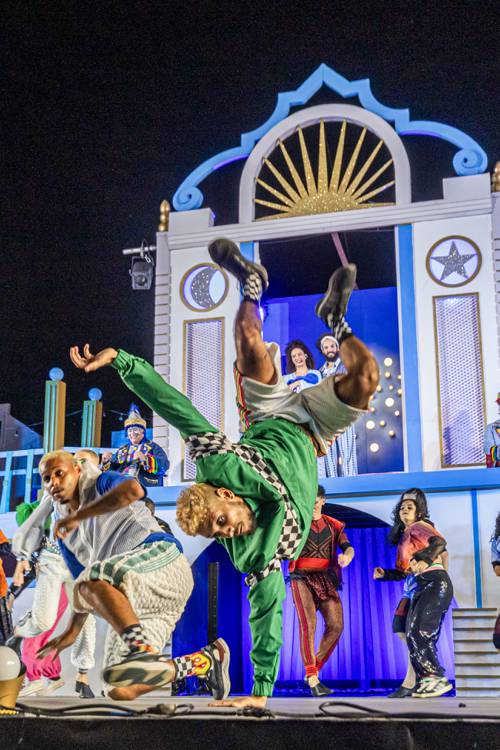
FAQ About The Impact of Hip-Hop Dance on Global Culture

What is hip-hop dance?
Hip-hop dance is a style of movement characterized by bounces and rocks, performed primarily to hip-hop music. It includes a variety of styles such as breaking, locking, and popping, which originated in the 1970s in the United States. It is often improvisational, and frequently forms part of dance competitions known as "battles."

How did hip-hop dance originate?
Hip-hop dance originated in the late 1960s and early 1970s in urban areas of New York City. It developed as part of the broader hip-hop culture, which includes rap, DJing, and graffiti art. Influences from African dance, martial arts, and gymnastics helped shape its unique style.

What are the main styles of hip-hop dance?
The main styles of hip-hop dance include breaking (often called breakdancing), locking, and popping. Each of these styles has its own distinctive movements and cultural history. Breaking involves athletic movements and floor work, locking features sharp, fast movements with pauses, and popping emphasizes quick muscle contractions.

How has hip-hop dance impacted mainstream media?
Hip-hop dance has significantly impacted mainstream media by influencing music videos, movies, and television shows. It has popularized dance competitions and themed shows like "America's Best Dance Crew" and "So You Think You Can Dance." Its styles and energy have inspired choreography in a variety of settings, including commercial advertisements.

What role does hip-hop dance play in competitions?
Hip-hop dance plays a central role in many dance competitions around the world. Events like the World Hip Hop Dance Championship and Red Bull BC One showcase hip-hop styles and dancers' skills, creativity, and improvisation. Competitions often include solo battles, team performances, and freestyle rounds, making them vibrant cultural and social events.

How has hip-hop dance influenced global dance practices?
Hip-hop dance has influenced global dance practices by integrating into various dance cultures worldwide. It has contributed elements to modern dance, street dance styles, and even contemporary ballet. Its universal appeal and adaptability have helped create a diverse international community of hip-hop enthusiasts.

What cultural impact has hip-hop dance had?
Hip-hop dance has had a profound cultural impact by promoting diversity, creativity, and community engagement. It has provided a platform for expressing individuality and social issues and has fostered cross-cultural exchanges through international competitions and events. The dance forms empower youth by giving them a voice and an outlet for self-expression.

How has hip-hop dance evolved over decades?
Since its inception, hip-hop dance has continuously evolved, integrating influences from various cultural trends and technologies. The use of online platforms and social media has facilitated global sharing of styles and techniques, leading to new subgenres and fusion styles. Workshops and collaborations have further enriched its growth and versatility.

What are some misconceptions about hip-hop dance?
Common misconceptions about hip-hop dance include the belief that it is solely an urban dance or only performed by young individuals. In reality, hip-hop dance transcends age, race, and geographical boundaries, and artists from diverse backgrounds engage with this form. Additionally, misconceptions may arise from associating all hip-hop dance with breakdancing, whereas hip-hop encompasses several styles.

How have social media platforms influenced hip-hop dance?
Social media platforms have significantly influenced hip-hop dance by providing dancers with a platform to share their moves, challenges, and collaborations with a vast audience. Viral dance challenges can turn unknown dancers into internet sensations and introduce hip-hop to new demographics. Platforms like YouTube, Instagram, and TikTok are popular venues for sharing and learning hip-hop dance.

What is the significance of dance battles in hip-hop culture?
Dance battles are a significant aspect of hip-hop culture, serving as competitive platforms where dancers showcase their skills, creativity, and improvisational ability. They encourage artistic expression and have become central to many international dance competitions. Battles foster community and respect among participants, while pushing the boundaries of innovation in dance.

Why is hip-hop dance considered a global phenomenon?
Hip-hop dance is considered a global phenomenon due to its widespread appeal and adaptability across cultures. Its energetic and expressive nature resonates with people worldwide, leading to international hip-hop communities and competitions. The dance form's ability to incorporate diverse cultural elements makes it a universal language of expression.

In which ways has hip-hop dance influenced fashion?
Hip-hop dance has influenced fashion significantly, becoming synonymous with urban and streetwear styles. The expressive nature of the dance encourages individualism in clothing, leading to the popularity of loose-fitting apparel, sneakers, and accessories like caps and hoodies. The dance's influence extends to global fashion runways and mainstream culture.

What is the educational value of hip-hop dance?
Hip-hop dance offers educational value in physical fitness, creativity, and cultural awareness. Dance classes and programs teach coordination, rhythm, and agility while fostering appreciation for music and artistic expression. As an artistic discipline, hip-hop dance promotes understanding of cultural history and social issues through its narratives and movements.

How has hip-hop dance been used as a tool for social change?
Hip-hop dance has been used as a tool for social change by addressing issues such as racial inequality, poverty, and violence. Workshops, performances, and community projects utilize dance as a medium for dialogue and activism, highlighting stories of marginalized communities and inspiring collective action towards social justice.

Can anyone learn hip-hop dance?
Yes, anyone can learn hip-hop dance regardless of age, background, or experience level. Many communities offer classes that cater to beginners, providing foundational skills in rhythm, movement, and technique. With practice and dedication, learners can progress to advanced levels, participate in performances, and join dance communities.

How does hip-hop dance connect to hip-hop music?
Hip-hop dance is intricately connected to hip-hop music, as they both stem from the larger hip-hop culture. The music provides the rhythm and beat for the dance, influencing the tempo and style of movements. Dancers often use musical elements such as lyrics and beats to inform their choreography and express emotion.

What are some notable international hip-hop dance events?
Notable international hip-hop dance events include the World Hip Hop Dance Championship, Red Bull BC One, Juste Debout, and Hip Hop International. These events attract dancers from around the globe, offering a stage to demonstrate their talents and engage in cultural exchanges. Such events celebrate the diversity and evolution of hip-hop dance styles.

How do hip-hop dance and street dance differ?
While hip-hop dance and street dance are often used interchangeably, they have distinct differences. Hip-hop dance specifically refers to styles born from hip-hop culture like breaking, locking, and popping. Street dance is a broader term that encompasses various urban dance styles, including those influenced by different cultural movements and subgenres.

What impact has hip-hop dance had on youth culture?
Hip-hop dance has had a significant impact on youth culture by promoting self-expression, empowerment, and community engagement. It provides young people with skills in creativity, teamwork, and discipline. Through its vibrant energy and universal appeal, hip-hop dance has become a tool for connecting with peers and exploring diverse cultural identities.
